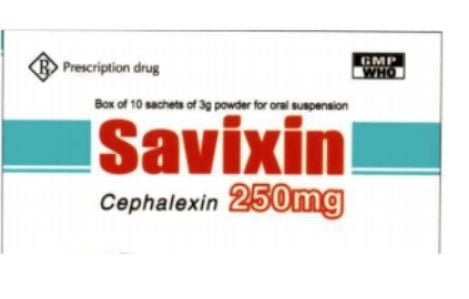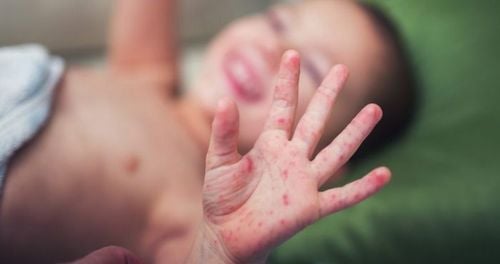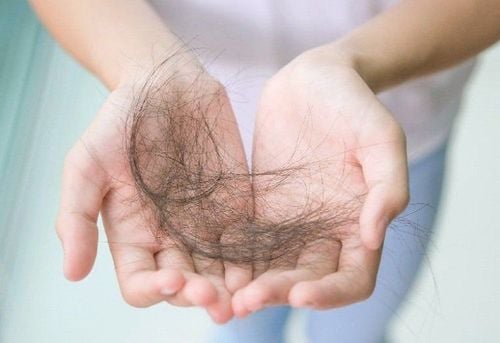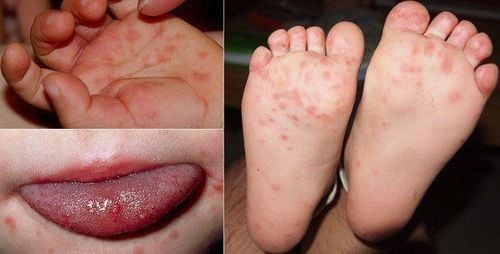This is an automatically translated article.
This article is expertly consulted by Master, Doctor Ngo Thi Oanh - Pediatrician - Pediatrics - Neonatology - Vinmec Ha Long International General Hospital.Hand, foot and mouth disease is a common infectious disease in young children, characterized by fever, sore throat, and a rash with blisters. Hand, foot and mouth disease is divided into 4 degrees, grade 1 is the mildest, can be treated as outpatients and monitored at medical facilities.
1. What is hand, foot and mouth disease?
Hand, foot and mouth disease is a common disease in children between the ages of 1 and 5, caused by an intestinal virus of the Picornaviridae family. The most common viruses that cause hand, foot and mouth disease are Enterovirus 71 (EV-71), Coxsackie virus A16.Clinical symptoms of hand, foot and mouth disease are usually:
Fever: mild, moderate or high. Skin lesions: Erythema bullae on palms, soles, knees, buttocks. Mucosal lesions: red or blistering sores 2-3 mm in diameter on the palate, buccal mucosa, gums, and tongue. Signs of complications: neurological, cardiovascular, respiratory.
2. Grading of hand, foot and mouth disease

Phân độ bệnh tay chân miệng
Hand, foot and mouth disease grade 1: Only mouth ulcers and/or skin lesions Hand, foot and mouth disease grade 2: Includes grades 2a and 2b. At this stage, the central nervous system is gradually damaged with manifestations such as startling. This is a manifestation of ataxia, cranial nerve (eye movement, swallowing, hoarseness,...). Hand, foot and mouth disease grade 3: At this stage, the disease has caused damage to the autonomic nervous system. At that time, in the circulatory system, the pulse is fast and blood pressure increases. In the respiratory system, the patient often breathes rapidly and irregularly. Along with that, the patient also has vasomotor disorders with sweating manifestations. Hand, foot and mouth disease grade 4: This is a severe stage, the patient has respiratory and circulatory failure.
3. What should be noted in the treatment of level 1 hand, foot and mouth disease?
Currently, there is no specific treatment for hand, foot and mouth disease, but only supportive treatment. Along with that, patients need to be closely monitored, early detection of abnormal factors and treatment of complications. Some factors that need to be closely monitored to prevent complications are:Temperature. Vomiting, startling Monitor pulse, blood pressure. In addition, ensuring adequate nutrition to improve the patient's condition is extremely important.
When hand, foot and mouth disease is new at grade 1, on the skin appear sores or lesions, redness, blisters, no damage to other organs or system functions. This is a mild disease stage, the patient can be treated with outpatient hand, foot and mouth disease and monitored at a medical facility. If the patient has a high fever, the fever must be reduced, usually using Paracetamol. The dose for children is 10 -15 mg/kg/time (oral) every 6 hours.
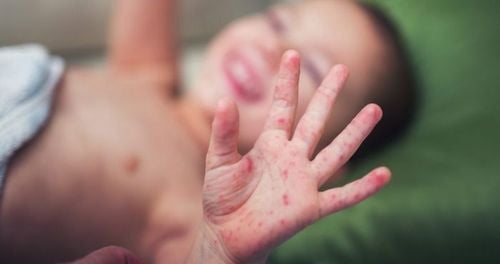
Bệnh tay chân miệng cấp độ 1 có thể điều trị ngoại trú và theo dõi tại cơ sở y tế
In addition, the child may have ulcers in the mucosa, so it is necessary to clean the child's teeth. Rest and avoidance of stimulation are also extremely important.
Parents should have children with hand, foot and mouth disease re-examine every 1-2 days, within 8 days. However, when the child has severe signs such as shaking limbs, startling, high fever, vomiting a lot... it is necessary to take the child to the medical center immediately for timely care.
Master. Doctor Ngo Thi Oanh has over 10 years working in the field of Pediatrics. Competently perform examination, diagnosis and treatment of respiratory, digestive, urological and nutritional diseases in children. During his work, Dr. Oanh regularly updates new knowledge on diagnosis and treatment through specialized conferences and continuous training classes.
Please dial HOTLINE for more information or register for an appointment HERE. Download MyVinmec app to make appointments faster and to manage your bookings easily.




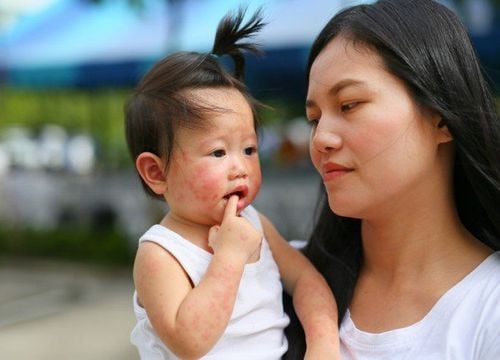
![[Vinmec - Q&A with experts] Number 02: Children's health in hot season (Part 1)](/static/uploads/small_20190723_082829_863235_Banner_FB_1200x628_max_1800x1800_png_982bf67b1c.png)
